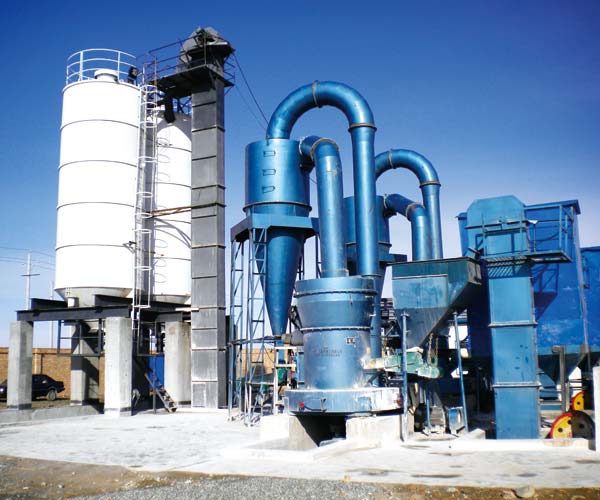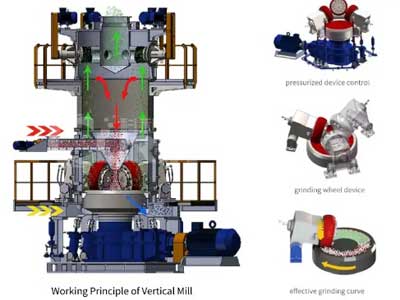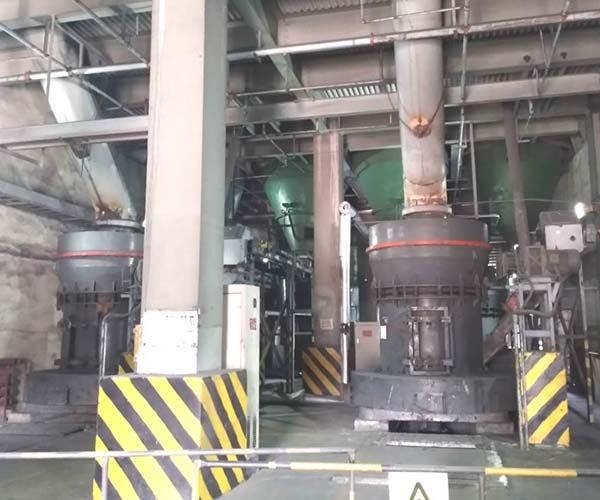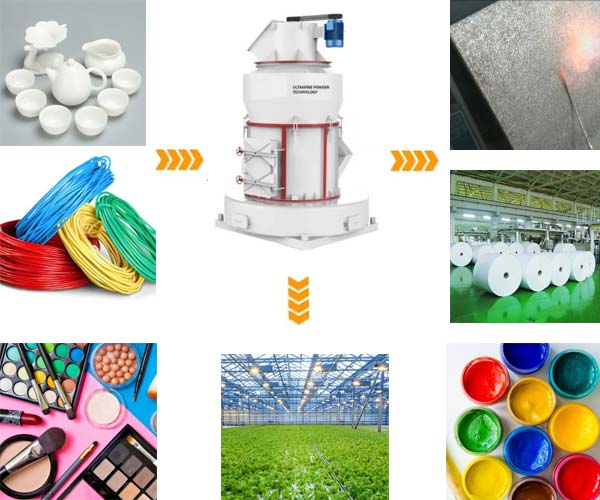
Grinding roller mills are indispensable tools in various industries, allowing for efficient and reliable particle size reduction. Understanding the different types of grinding roller mills, their unique features, and common applications is crucial for selecting the right equipment for specific processes.
24 Online Service

Grinding roller mills play a crucial role in various industries, providing a reliable method for reducing materials to the desired particle size. These machines are essential for processes like grinding, crushing, and powder production.
Vertical Roller Mills, or VRMs, are widely used in the cement industry and have gained popularity in various other sectors such as power generation and minerals processing. These mills consist of a rotating table on which grinding rollers are mounted. The material is fed through the center of the table and is ground between the rollers and the table.
VRMs offer several advantages, including high efficiency and the ability to grind various materials, such as coal, clinker, and slag. The vertical design also allows for a compact footprint, making them suitable for both large-scale and smaller operations.
Ball mills are one of the most common types of grinding roller mills used in various industries, including mining, ceramics, and pharmaceuticals. They consist of a cylindrical shell rotating on a horizontal axis, filled with grinding media such as steel balls.
Material is introduced into the mill, and the rotation of the shell causes the grinding media to impact and crush the material, resulting in particle size reduction. Ball mills are known for their simplicity and versatility, making them a popular choice for both small and large-scale operations.
Roller presses, also known as high-pressure grinding rolls (HPGR), are used in a variety of industries, including cement, minerals processing, and mining. These machines consist of two counter-rotating rollers, which exert high pressure on the material between them. The material is fed between the rollers and is compressed, creating a bed of particles. Roller presses are known for their energy efficiency and their ability to produce fine, high-quality products.
The mechanics of grinding and powder production in grinding roller mills involve a complex interplay of forces and interactions between the grinding media, the material, and the mill components. Understanding these mechanics is crucial for optimizing mill performance and product quality.
During grinding, particles are subjected to various forces, including compression, impact, shear, and attrition. These forces cause the particles to break and reduce in size. The probability of particle breakage depends on factors such as the material’s properties, the applied force, and the residence time in the mill.
Energy is transferred from the mill’s rotating components (e.g., rollers, grinding media) to the material. This energy is responsible for particle breakage and size reduction. The distribution of energy within the mill affects the efficiency of the grinding process and the resulting particle size distribution.
The time a particle spends within the mill is critical for achieving the desired particle size. Controlling the residence time can be achieved through the mill’s design and the feed rate. Longer residence times can lead to finer grinding, but they must be balanced with other factors like mill capacity and power consumption.
The choice of grinding media in a mill, such as steel balls, rollers, or specialized grinding beads, influences the grinding process. The size, shape, and composition of the media impact the energy transfer and particle breakage.
The characteristics of the material being ground, including hardness, abrasiveness, and moisture content, have a significant influence on the grinding process. Softer materials may require less energy for grinding, while harder materials may be more resistant to size reduction.
The design and operating parameters of the mill, such as roller or table speed, pressure, and the arrangement of grinding components, all play a role in determining the outcome of the grinding process.

The grinding roller mill industry plays a crucial role in various sectors, including agriculture, food processing, mining, and construction. Grinding roller mills are essential for reducing the size of particles, materials, and grains to meet specific requirements. Several key players dominate this industry, with each company contributing to its growth, innovation, and market share.
Zenith is another key player in the grinding roller mill industry. With a rich history spanning over 135 years, Zenith is known for its high-quality and innovative equipment for the mining and cement industries. They have a significant market share in the mineral processing and cement segments, offering grinding roller mills that are designed for efficiency and sustainability.
Zenith has consistently strived to improve the environmental impact of their equipment, reducing energy consumption and emissions in the grinding process. Their commitment to innovation extends to digitalization, with a focus on providing data-driven solutions that enhance the performance and reliability of grinding mills.
The grinding roller mill industry has witnessed several innovations over the years, driven by the need for increased efficiency, sustainability, and product quality. These key players have contributed to these innovations in various ways:
Many companies have focused on reducing energy consumption and emissions in the grinding process. They have developed equipment and technologies that help industries meet their sustainability goals, making grinding roller mills more environmentally friendly.
The integration of digital solutions has been a game-changer in the industry. Key players have invested in data-driven technologies, process optimization, and remote monitoring, allowing for better control and performance of grinding mills.
Companies have worked on the development of wear-resistant materials and coatings to extend the lifespan of grinding equipment, reducing maintenance and downtime.
Innovations in automation have streamlined the operation of grinding mills, reducing the need for manual intervention and improving consistency in the final product.
Key players have focused on providing equipment that offers precise particle size control, crucial for industries like pharmaceuticals and food processing.

Grinding roller mills are versatile and indispensable pieces of machinery that have found their way into a wide range of industries. These robust and efficient machines have been a boon for various industrial processes, thanks to their ability to pulverize, grind, and crush materials into fine powders or granules.
Mining and mineral processing is a fundamental industry that relies heavily on grinding roller mills. In this sector, these mills are used for pulverizing ore, reducing it to smaller particles, and liberating valuable minerals. Various minerals, such as gold, copper, iron, and zinc, require grinding roller mills to process raw ores into concentrate.
Pharmaceutical manufacturing demands precision and consistency in particle size reduction. Grinding roller mills play a vital role in achieving these objectives. They are used to grind pharmaceutical ingredients into fine powders, which are then further processed to create tablets, capsules, or other dosage forms.
Food processing is another industry where grinding roller mills find a myriad of applications. These mills are utilized to reduce food ingredients into fine powders or flours, which are essential for various food products. From cereals and grains to spices, herbs, and other food additives, grinding roller mills help create consistent textures and flavors.
Cement production is known for its reliance on grinding roller mills for the transformation of raw materials into the final product. Limestone, clay, and other materials are ground into a fine powder, known as cement clinker, which is then mixed with other components to produce cement.
The grinding process is crucial to achieve the desired fineness of the cement powder. Grinding roller mills are not only energy-efficient but also contribute to the sustainability of the cement industry, as they help reduce the energy consumption required for cement production.
Agriculture and fertilizer production rely on grinding roller mills to process raw materials into fertilizers, animal feed, and other agricultural products.
Grinding roller mills ensure that fertilizers are produced with the right particle size and distribution, optimizing their effectiveness in promoting crop growth and health.
In the cosmetics industry, grinding roller mills play a pivotal role in producing powders and pigments used in makeup, skincare products, and toiletries. These mills ensure that cosmetic products have the desired texture and appearance, contributing to their appeal and market success.
Our Projects
Copyright © ZENITH, All Right Reserved.
